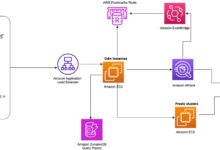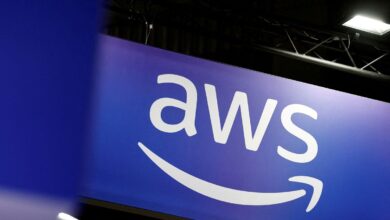AWS Free Tier: 12 Months of FREE Cloud Power!
Want to explore the cloud without spending a dime? The AWS Free Tier gives you hands-on access to Amazon’s powerful services — completely free for up to 12 months. It’s perfect for beginners, startups, and developers testing new ideas.
What Is the AWS Free Tier?

The AWS Free Tier is Amazon Web Services’ way of welcoming new users to the cloud. It’s not a trial or a demo — it’s real access to real cloud infrastructure, completely free within defined usage limits. Whether you’re building a personal project, learning cloud computing, or prototyping a startup idea, the Free Tier gives you the tools to get started without financial risk.
Understanding the Three Types of Free Offers
AWS doesn’t just offer one kind of free access. Instead, it provides three distinct categories under the Free Tier umbrella, each designed for different use cases and durations.
Always Free: Certain services are perpetually free, as long as you stay within specified usage limits.Examples include AWS Lambda (1 million free requests/month) and Amazon DynamoDB (25 GB free storage).12-Month Free: Most popular services like EC2, S3, and RDS are free for the first 12 months after you create your AWS account.This is ideal for learning and launching early-stage projects..
Short-Term Trials: Some services offer limited-time free trials (e.g., 30 days) that don’t require a long-term commitment but are great for testing specific features.Who Can Use the AWS Free Tier?Any individual or organization that has never had an AWS account can sign up and access the Free Tier.You’ll need a valid email address, a credit card (for identity verification, though you won’t be charged unless you exceed limits), and a phone number..
According to AWS’s official Free Tier page, eligibility is limited to new customers only. Once your 12-month period ends, standard pricing applies — but you can continue using Always Free services indefinitely.
“The AWS Free Tier lowers the barrier to entry for cloud computing, enabling millions of developers and startups to innovate without upfront costs.” — AWS Official Documentation
Key Services Included in the AWS Free Tier
The real value of the AWS Free Tier lies in the breadth of services available. From computing and storage to databases and machine learning, AWS gives you access to over 60 services across multiple categories.
Compute: EC2 and Lambda
Amazon EC2 (Elastic Compute Cloud) is one of the most widely used services under the Free Tier. For the first 12 months, you get 750 hours per month of Linux or Windows t2.micro or t3.micro instances.
- Perfect for hosting small websites, learning Linux, or running lightweight applications.
- 750 hours equals one instance running non-stop for a month.
- After 12 months, you can still use AWS Lambda for free — up to 1 million requests monthly and 400,000 GB-seconds of compute time.
Learn more about EC2 Free Tier at AWS EC2 Pricing.
Storage: S3, EBS, and Glacier
Amazon S3 (Simple Storage Service) offers 5 GB of standard storage for free — forever. This is ideal for backing up files, hosting static websites, or storing application assets.
- Includes 20,000 Get Requests and 2,000 Put Requests per month.
- 15 GB of data transfer out to the internet per month.
- Also includes 30 GB of Amazon EBS (Elastic Block Store) storage and 100 GB of snapshot storage in Amazon Glacier.
These limits are part of the Always Free offering, so you can keep using them even after your 12-month period ends.
Databases: RDS, DynamoDB, and ElastiCache
For relational databases, Amazon RDS offers 750 hours per month of a db.t3.micro instance for 12 months. Supports MySQL, PostgreSQL, MariaDB, Oracle, and SQL Server (Express Edition).
- Includes 20 GB of database storage and 20 million I/Os per month.
- Ideal for learning SQL, building small web apps, or testing database migrations.
- Amazon DynamoDB offers 25 GB of free storage and 25 provisioned write capacity units (WCU) and 25 read capacity units (RCU) per month — forever.
For caching, Amazon ElastiCache provides 750 hours per month of cache.t3.micro node usage for 12 months.
How to Sign Up for the AWS Free Tier
Signing up is straightforward and takes less than 10 minutes. AWS requires basic personal or business information and a valid credit card for identity verification.
Step-by-Step Registration Process
Follow these steps to activate your AWS Free Tier access:
- Go to aws.amazon.com and click “Create an AWS Account”.
- Enter your email address and create a password.
- Provide your contact information (name, address, phone).
- Enter your credit card details — AWS uses this for verification only.
- Verify your identity via phone call or text message.
- Select the “Basic” support plan (it’s free) and complete registration.
Once registered, you’ll automatically be enrolled in the AWS Free Tier. No coupon codes or special promotions needed.
Avoiding Unexpected Charges
While the Free Tier protects you from most charges, exceeding usage limits or using non-Free Tier services can result in fees. To avoid surprises:
- Set up billing alerts using AWS Budgets.
- Monitor your usage via the AWS Billing Dashboard.
- Use only Free Tier-eligible instance types (e.g., t3.micro, not t3.small).
- Terminate unused resources like EC2 instances, EBS volumes, or RDS databases.
AWS will notify you if you’re approaching your free usage limits, but it’s best to stay proactive.
Top Use Cases for the AWS Free Tier
The AWS Free Tier isn’t just for learning — it’s a powerful platform for real-world applications. Here are some practical ways developers and entrepreneurs use it.
Hosting a Personal Website or Blog
You can host a fully functional static website using Amazon S3 and route traffic via Amazon Route 53 (with a free domain via Route 53’s .com domain trial). Pair it with CloudFront for faster delivery.
- Store HTML, CSS, JS files in S3 (within 5 GB limit).
- Use CloudFront for free 50 GB data transfer per month (first 12 months).
- Add HTTPS with AWS Certificate Manager (ACM), which is always free.
This setup is cost-effective, scalable, and perfect for portfolios or personal branding.
Learning Cloud Computing and DevOps
The Free Tier is a sandbox for mastering AWS services. Students and professionals use it to gain hands-on experience with:
- Setting up virtual servers (EC2).
- Configuring security groups and IAM roles.
- Automating deployments with AWS CLI or SDKs.
- Practicing disaster recovery with EBS snapshots.
Many AWS certification candidates rely on the Free Tier to practice before exams like AWS Certified Cloud Practitioner or Solutions Architect Associate.
Prototyping a Startup MVP
Founders can build and test a Minimum Viable Product (MVP) without upfront infrastructure costs. For example:
- Use EC2 to run a backend API.
- Store user data in RDS or DynamoDB.
- Host a frontend in S3 with CloudFront.
- Use SNS or SES for email notifications.
This allows startups to validate ideas, gather user feedback, and iterate — all within the Free Tier limits.
Common Mistakes to Avoid with AWS Free Tier
Many users unknowingly incur charges because they overlook key details. Here are the most frequent pitfalls and how to avoid them.
Leaving EC2 Instances Running 24/7
While 750 hours of EC2 usage sounds generous, running multiple instances or forgetting to shut them down can exhaust your free hours quickly.
- Use AWS Instance Scheduler to automatically stop instances at night or on weekends.
- Always terminate test instances after use.
- Check your EC2 dashboard regularly under “Running Instances”.
Ignoring Data Transfer Costs
Data transfer out to the internet is limited to 15 GB per month for S3 and 100 GB for EC2 (first 12 months). Exceeding this incurs charges.
- Avoid large file downloads or video streaming.
- Use CloudFront’s free tier (50 GB/month) to optimize delivery.
- Monitor data transfer in the AWS Cost Explorer.
Forgetting About EBS Volumes and Snapshots
Even if you terminate an EC2 instance, the attached EBS volume may persist — and you’ll be charged for it.
- Always delete associated EBS volumes after terminating instances.
- Check the “Volumes” section in the EC2 console.
- Use automated cleanup scripts or AWS Lambda functions to manage orphaned resources.
Monitoring and Managing Your Free Tier Usage
Staying within limits requires active monitoring. AWS provides tools to help you track usage and avoid overages.
aws free tier – Aws free tier menjadi aspek penting yang dibahas di sini.
Using the AWS Billing Dashboard
The AWS Billing Dashboard is your central hub for tracking Free Tier usage.
- Navigate to “Billing & Cost Management” in the AWS Console.
- View your current Free Tier usage (e.g., EC2 hours, S3 storage).
- See how much of your 750-hour EC2 allowance you’ve used.
This dashboard updates in near real-time, helping you stay on track.
Setting Up Billing Alerts
AWS Budgets allows you to create custom alerts when spending exceeds a threshold.
- Create a budget for $0.01 to get notified of any charges.
- Set alerts at 50%, 80%, and 100% of your expected usage.
- Receive notifications via email or SMS.
This is the best way to catch unexpected costs early.
Using AWS Trusted Advisor
Trusted Advisor offers cost optimization recommendations — even on the free Basic plan.
- Identifies idle EC2 instances.
- Recommends deleting unattached EBS volumes.
- Flags overutilized resources.
Access it from the AWS Console under “Support Center”.
What Happens After 12 Months?
Your 12-month Free Tier period doesn’t mean everything shuts down. Instead, AWS transitions to standard pricing — but you retain access to Always Free services.
Services That Remain Free Forever
Even after 12 months, you can continue using these services at no cost (within limits):
- Amazon S3: 5 GB storage, 20,000 GETs, 2,000 PUTs.
- AWS Lambda: 1 million requests/month.
- DynamoDB: 25 GB storage, 25 WCU, 25 RCU.
- SNS: 1 million notifications/month.
- CloudWatch: 10 custom metrics, 10 alarms, 5 dashboards.
This makes AWS a long-term viable option for small-scale applications.
Transitioning to Paid Services
If you need more than the Free Tier offers, AWS uses a pay-as-you-go model. You only pay for what you use.
- EC2 instances cost as low as $0.0116/hour for t3.micro (Linux).
- S3 storage is $0.023/GB/month for standard storage.
- RDS starts at $0.018/hour for db.t3.micro.
Consider using Reserved Instances or Savings Plans for long-term cost savings.
Advanced Tips to Maximize the AWS Free Tier
Go beyond the basics with these expert strategies to stretch your Free Tier further.
Automate Resource Management with AWS Lambda
Use AWS Lambda (which is free for 1 million requests/month) to automate cleanup tasks.
- Write a function to stop EC2 instances every night at 10 PM.
- Automatically delete old S3 logs older than 30 days.
- Tag resources and use Lambda to enforce naming policies.
This reduces manual effort and prevents accidental overages.
Combine Free Tier with Open Source Tools
Leverage free software to enhance your AWS environment.
- Run WordPress on EC2 using Bitnami (free AMI).
- Use Grafana + CloudWatch for free monitoring.
- Deploy Node.js or Python apps using free frameworks.
This maximizes value without adding cost.
Use AWS Educate for Additional Benefits
Students and educators can access AWS Educate, which provides additional free credits and learning resources.
- Receive $30–$200 in AWS credits.
- Access sandbox labs and cloud curriculum.
- Join a global community of learners.
Visit AWS Educate to learn more.
Frequently Asked Questions (FAQ)
Is the AWS Free Tier really free?
Yes, the AWS Free Tier is completely free for eligible new users. You get access to a wide range of services at no cost for 12 months, plus several services that are always free. However, you must stay within the usage limits to avoid charges.
Do I need a credit card to sign up for AWS Free Tier?
Yes, AWS requires a valid credit card to verify your identity during registration. While you won’t be charged unless you exceed free limits or use paid services, the card is mandatory for account creation.
Can I extend the 12-month AWS Free Tier?
No, the 12-month Free Tier is limited to one per AWS account and cannot be extended. However, you can create a new account if you’re part of a team or have a different use case, but AWS may restrict this based on identity verification.
What happens if I exceed my Free Tier limits?
If you exceed your free usage, AWS will charge you at standard pay-as-you-go rates. These charges can be small (e.g., a few cents for extra S3 requests) or larger (e.g., running a large EC2 instance for days). Setting up billing alerts helps prevent surprises.
Are all AWS regions covered by the Free Tier?
Most AWS regions support the Free Tier, but availability may vary. The US East (N. Virginia), US West (Oregon), and EU (Ireland) regions are fully supported. Always check the AWS Free Tier page for region-specific details.
Getting started with the AWS Free Tier is one of the smartest moves for anyone diving into cloud computing. It offers real infrastructure, powerful tools, and zero financial risk. Whether you’re a student, developer, or entrepreneur, you can build, learn, and innovate without spending a penny. Just stay aware of usage limits, monitor your account, and leverage automation to get the most out of this incredible offer. The cloud is no longer out of reach — it’s free to explore.
aws free tier – Aws free tier menjadi aspek penting yang dibahas di sini.
Further Reading:









